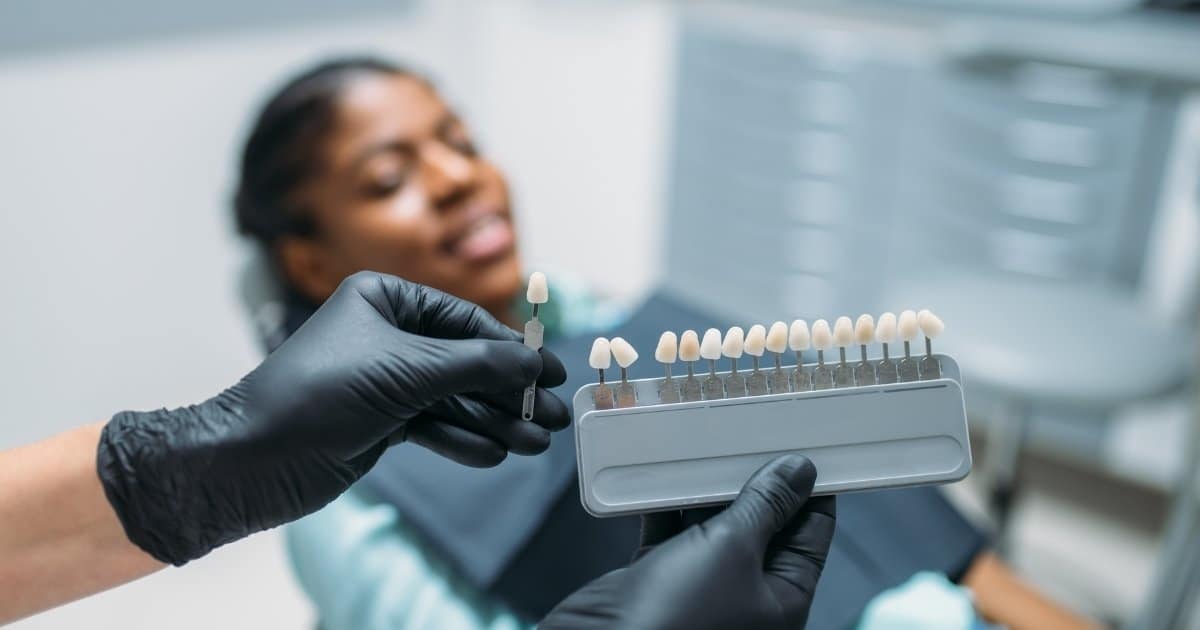Dental veneers can do wonders for your smile, making it wider and brighter. They can close the gaps and give you a self-confidence boost. But what if that perfect smile doesn’t make you feel perfect? What if you have a swollen area or pain in your mouth around the veneer? This may indicate an underlying infection. They do not infect veneers, but they can infect the root or gums under the tooth.
Let’s discuss the symptoms of the condition, what you can do, and when to see a professional.
What Are the Signs of Dental Veneer Infection?
Timely diagnosis proves to be of great help here. The infection typically remains subtle during the initial stages and can later develop into a severe and apparent condition.
Here are signs to watch out for:
- Constant pain or throbbing around the veneered teeth.
- Gums around the veneer appear swollen or reddened.
- Bleeding while brushing or flossing.
- Bad breath or a bitter taste that doesn’t go away.
- There is a change in color at the edge of the veneer.
- There are signs of pus or ooze from the gum line.
Consider not ignoring the treatment of one or more of these particular symptoms. Left unaddressed, these symptoms end up causing damage to the tooth and surrounding tissue.
What to Do if You Suspect a Dental Veneer Infection?
First, don’t panic. All infections are treatable when early intervention is sought.
The following are what you can immediately do:
- Salt water rinsing different times a day to lessen bacteria and swelling within the mouth.
- Refrain from chewing on the side affected to avoid aggravation.
- Brush and floss normally, being very cautious in the sore area.
- Prolonged self-medication should be avoided. It would help to relieve the temporary symptoms, but it would not cure the problem.
All these would manage symptoms temporarily. However, they should never replace a consultation with a professional.
When to See A Dentist for Dental Veneer Infection?
Some symptoms indicate that it’s time to stop waiting and make that call.
Call your dentist immediately if you suffer from:
- Intense pain that has worsened since the last visit.
- Suddenly increased swelling around or pus formation around the veneer.
- Feeling unwell, accompanied by a fever, suggests that the infection may be spreading.
- Loose or shifting veneer- it might mean allowing bacteria entry.
Early treatment can save your tooth and prevent more complex procedures later on.
How to Keep Your Veneers and Gums Healthy?
You want to keep the shiny new, perfect set of veneers in place and the rest of your mouth in excellent condition. Here’s how to do it:
- Brush two times daily and floss every day, concentrating along the gum line and around the edges of your veneers.
- Make sure to have regular visits to your dentist for professional cleaning and check-ups.
- Your teeth are not tools—do not open things, nor bite into hard objects with veneers.
Not only do veneers look good, but they can also cause problems hidden below, so keep up the care even if they’re flawless.
Veneers can enhance your smile wonderfully. But they need a healthy foundation – strong gums and teeth. If you notice any sign of infection, act swiftly. Contact a professional if the situation gets worse.
Schedule an appointment with our clinic today and ensure your veneers are in top condition.




